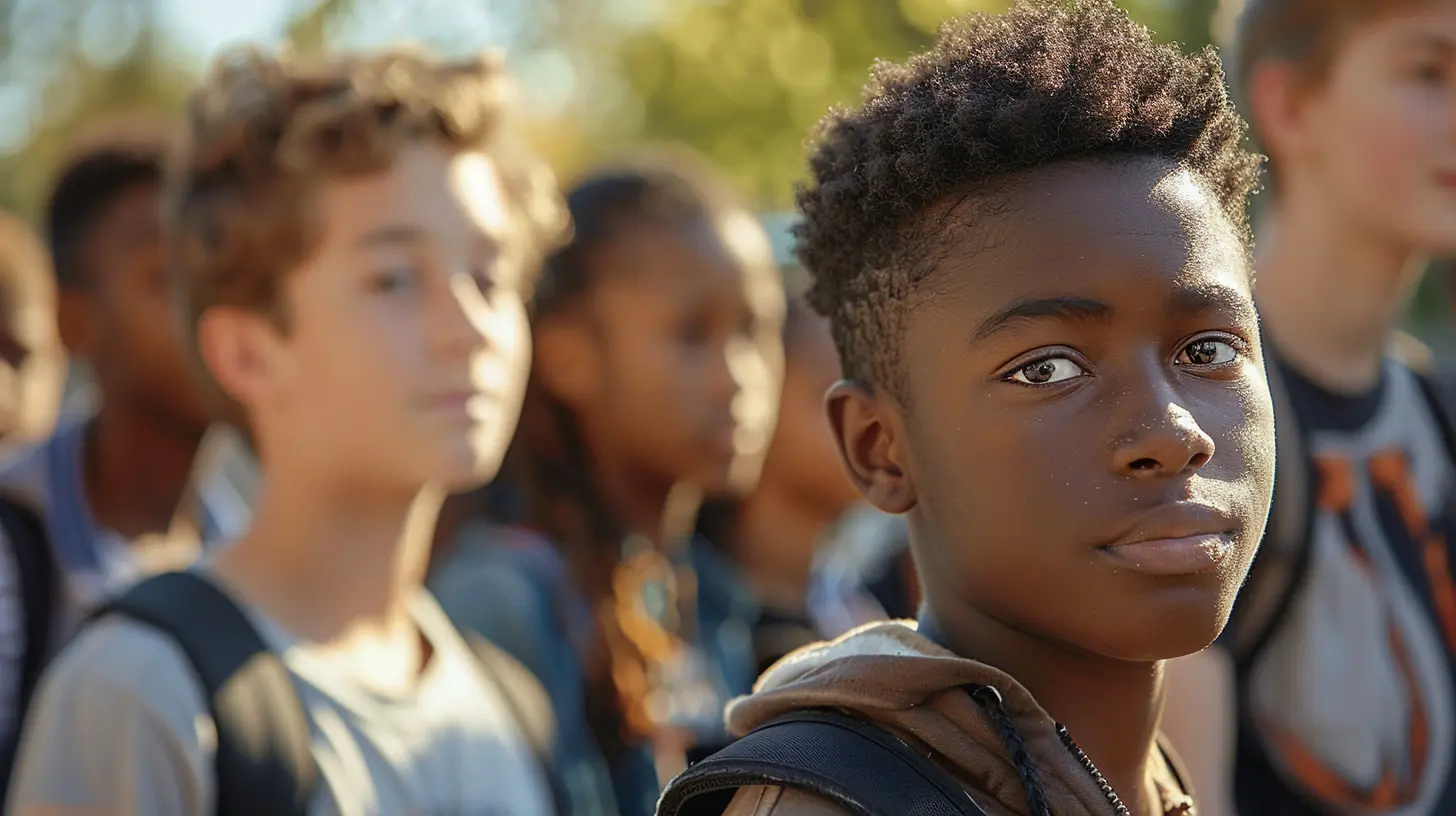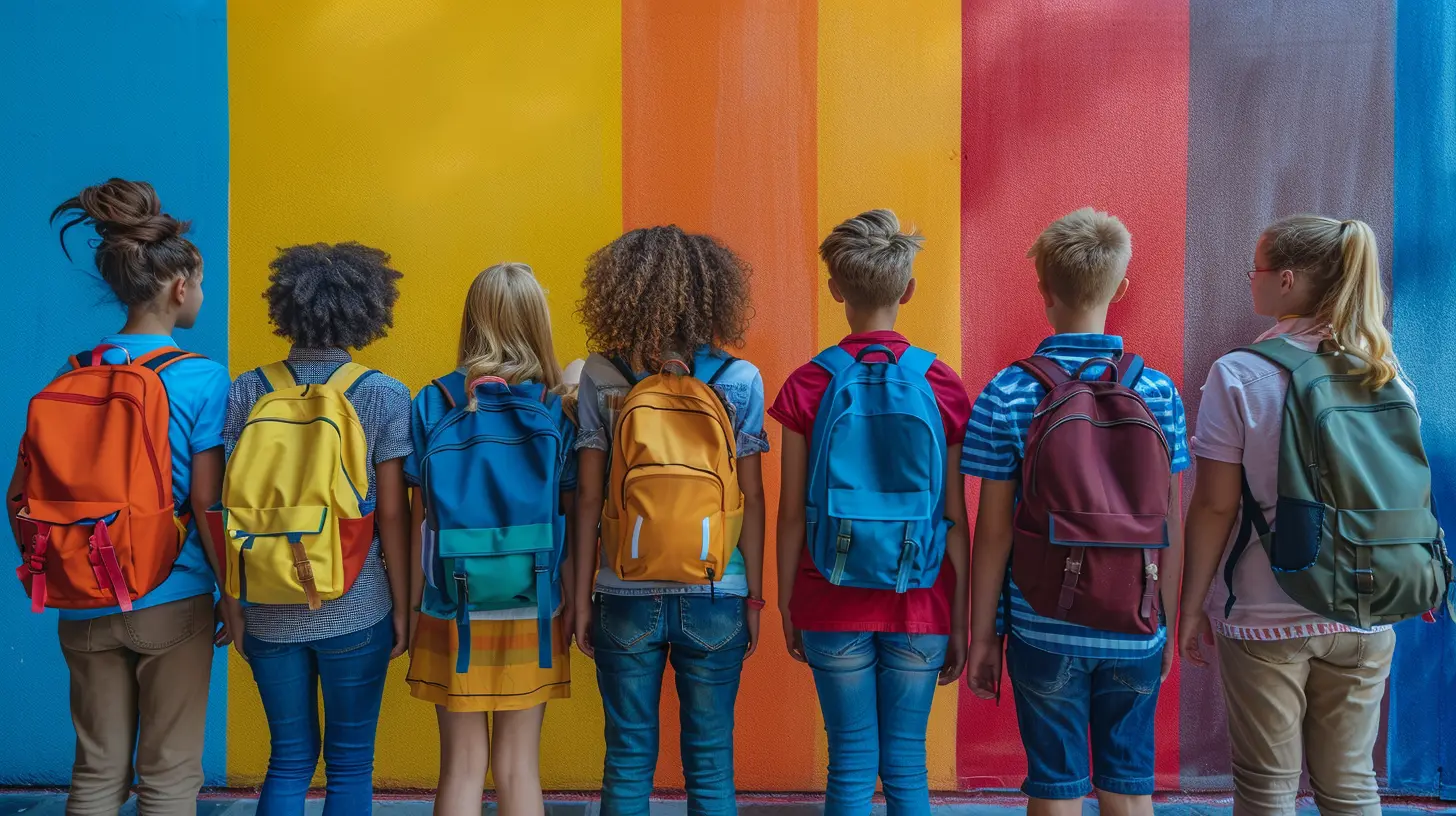The Importance of Inclusivity in Preventing Bullying
15 September 2025
We’ve all heard the saying, “Treat others the way you want to be treated.” But how often do we really think about what this means, especially when it comes to building an inclusive environment? In today's increasingly connected world, where people from all walks of life are brought together—whether in schools, workplaces, or online communities—it’s more important than ever to foster inclusivity. Why? Because inclusivity is one of the most effective tools we have for preventing bullying.
Think about it: When everyone feels accepted, valued, and understood, there’s little room for hostility or exclusion, which are often the breeding grounds for bullying. So, let's dive in and explore why inclusivity is so essential in preventing bullying and how we can all contribute to creating a more inclusive world. Ready? Let’s go!

What Is Inclusivity?
Before we get into the nitty-gritty details of how inclusivity helps prevent bullying, let’s first break down what inclusivity really means.Inclusivity goes beyond just “tolerating” differences. It’s about actively embracing diversity—whether that’s in terms of race, gender, religion, sexual orientation, physical or mental abilities, socioeconomic status, or even personal interests. Inclusivity means creating spaces where everyone feels like they belong, regardless of who they are.
In simpler terms? It’s like hosting a dinner party where everyone, no matter their background or preferences, feels welcome, comfortable, and appreciated. No one’s left in the corner feeling like they don’t matter.
But why does this matter so much when we’re talking about bullying?

The Connection Between Inclusivity and Bullying
Let’s be real for a second. Bullying often stems from a lack of understanding, fear of differences, or the need to feel superior over someone else. When someone is seen as “different,” they can become an easy target. Whether it’s because of the way they look, speak, think, or act, society has a bad habit of singling out people who don’t fit into the so-called “norm.”However, when an environment promotes inclusivity, the very idea of "otherness" becomes less significant. Everyone is seen as unique, but equally valuable. Differences are celebrated, rather than ridiculed. Creating an inclusive environment isn’t just about being nice—it’s about actively dismantling the conditions that allow bullying to thrive in the first place.
In an inclusive setting, there’s little room for exclusion, and without exclusion, bullying struggles to find a foothold.
Inclusivity as a Preventative Measure
Think of inclusivity as a form of community armor. When inclusivity is woven into the fabric of a school, workplace, or community, it serves as a protective barrier against bullying. It’s like building a strong foundation for a house. If the foundation is solid, the house can withstand storms—those “storms” being potential incidents of bullying.In contrast, in environments where inclusivity is lacking, cliques, divisions, and hierarchies can form, creating fertile ground for bullying. When people are divided into “us” vs. “them,” it becomes easier for individuals or groups to be marginalized and targeted.
Inclusivity makes it clear that there's no “them”—there’s only “us.”

The Role of Schools in Promoting Inclusivity
Schools are often where bullying is most visible, especially during the formative years of childhood and adolescence. But schools also have a unique opportunity to set the tone for inclusivity from the get-go.Building an Inclusive School Culture
An inclusive school culture doesn’t happen by accident; it requires intentional effort. Schools can promote inclusivity by ensuring that all students feel represented and respected. This can be achieved by:- Incorporating diverse curricula: Teaching students about different cultures, histories, and perspectives goes a long way in fostering understanding and empathy.
- Creating diverse extracurricular activities: Not every student will be interested in the same things. Offering a wide range of activities, from sports to clubs focused on arts, technology, or social justice, ensures that every student has a place to belong.
- Celebrating differences: Schools can host events that celebrate diversity, such as cultural festivals, LGBTQ+ awareness events, or disability awareness campaigns. These events help normalize differences and create a culture of acceptance.
- Training staff and students: Teachers, administrators, and even students should be trained to recognize and combat bullying. They should also be taught the importance of inclusivity so they can model and promote this behavior.
Empowering Students to Be Allies
Inclusivity isn’t just the responsibility of school administrators or teachers. Students themselves play a crucial role. When students are taught the value of inclusivity, they can become powerful allies in the fight against bullying.Let’s break down what it means to be an ally. Being an ally is more than just standing up for someone when they're being picked on. It's about creating an environment where bullying doesn’t even start. It’s like being a gardener who pulls out the weeds before they take over the garden.
When students are allies, they actively promote inclusivity by:
- Welcoming new students
- Standing up for classmates who may be marginalized
- Promoting kindness and respect in their daily interactions
- Encouraging others to respect differences
By empowering students to take on the role of allies, schools can magnify the impact of their inclusivity efforts.

Inclusivity in the Workplace: A Key to Bullying Prevention
It’s not just schools that need to focus on inclusivity. Bullying doesn’t magically stop when people enter the workforce. In fact, workplace bullying is a real and pervasive issue. But just like in schools, inclusivity can serve as a powerful antidote.Creating an Inclusive Work Culture
In the workplace, inclusivity can be promoted through several strategies:- Diverse hiring practices: Companies should actively seek to hire a diverse range of employees. This not only prevents homogeneity but also enriches the workplace with different perspectives and ideas.
- Inclusive policies: Companies should have clear policies that promote inclusivity and outline zero tolerance for bullying or harassment. Policies should also accommodate different needs, such as flexible work hours for parents or accessibility for employees with disabilities.
- Training and development: Just like in schools, employees should be trained on the importance of inclusivity and how to recognize and combat bullying in the workplace.
When employees feel valued and included, they are less likely to engage in or tolerate bullying behavior. Inclusivity creates an atmosphere of mutual respect, where differences are seen as strengths rather than weaknesses.
The Role of Parents and Guardians in Fostering Inclusivity
Parents and guardians are often the first role models in a child’s life. The values that children learn at home are the ones they carry with them into the world. So, it’s crucial that parents and guardians foster an inclusive mindset from an early age.Lead by Example
Children are like sponges—they absorb everything they see. Parents and guardians should model inclusive behavior by:- Welcoming people from different backgrounds into their lives
- Speaking positively about diversity
- Encouraging their children to ask questions and be curious about different cultures and perspectives
Open Communication
Parents should also maintain open lines of communication with their children. If a child is experiencing or witnessing bullying, it’s important that they feel comfortable talking about it. Parents can use these conversations as opportunities to teach empathy, kindness, and inclusivity.
Why Inclusivity Needs to Be a Community Effort
Inclusivity isn’t just the responsibility of schools, workplaces, or individual families. It’s a community-wide effort. We need to get everyone on board—from local leaders to social organizations, and even media outlets.When entire communities embrace inclusivity, it becomes the norm rather than the exception. This creates a ripple effect, where more and more people feel empowered to stand up against bullying.
Imagine it like this: If inclusivity is a fire, every person who embraces and promotes it adds fuel to the flames. Eventually, the fire becomes impossible to put out, and bullying is left with no place to hide.
The Long-Term Benefits of Inclusivity
The beauty of inclusivity is that its benefits extend far beyond just preventing bullying. When we foster inclusivity, we create environments where:- People feel safe to be themselves
- Creativity and innovation are encouraged (because new ideas often come from different perspectives)
- Empathy and understanding flourish
In the long run, inclusivity doesn’t just make our schools, workplaces, and communities better—it makes the world better.
Conclusion: Inclusivity Is Everyone’s Responsibility
At the end of the day, inclusivity is more than just a buzzword or a box to check. It’s a powerful tool that can prevent bullying and foster a world where everyone feels like they belong. Whether we’re students, teachers, employees, parents, or community members, we all have a role to play in creating inclusive environments.So, let’s make a conscious effort to embrace diversity, celebrate differences, and actively include everyone in the conversation. After all, when we create spaces where everyone feels welcome, bullying doesn’t stand a chance.
all images in this post were generated using AI tools
Category:
Bullying PreventionAuthor:

Anita Harmon
Discussion
rate this article
1 comments
Phoebe Mathews
This article highlights a crucial aspect of fostering a safe environment in schools. Emphasizing inclusivity not only nurtures empathy but also significantly reduces bullying, creating a healthier community for all students. Great insights!
October 2, 2025 at 4:10 AM

Anita Harmon
Thank you for your thoughtful comment! I'm glad you found the insights on inclusivity and its impact on reducing bullying valuable.


